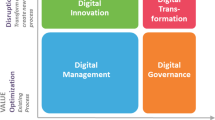Abstract
For decades, nonprofit organizations have played a vital role in educational technology innovation. Sesame Street, online high schools, probeware for science and mathematics teaching and learning, and many other innovations now widely used both in and outside schools were developed by nonprofits, including not only universities but also independent R&D organizations, such as the Concord Consortium. Within the federal budget, there has been a decade-long trend to reduce both the size and number of awards made specifically for innovation in educational technology. Small grants, including those for basic research, are less likely to lead to transformative innovations in teaching and learning than larger, targeted awards for innovation. At a time when digital tools continue to grow more useful and powerful, and when larger numbers of schools are using them effectively, it is time for federal agencies to focus additional resources on educational technology innovation.
Similar content being viewed by others
Notes
Originally TTY stood for teletypewriter. Later, people referred to TDD devices (telecommunications devices for the deaf).
References
Adelman N, Donnelly MB, Dove T, Tiffany-Morales J, Wayne A, Zucker AA (2002) The integrated studies of educational technology: professional development and teachers’ uses of technology. U.S. Department of Education, Washington, DC
American Educational Research Association (2007) Research points: science education that makes sense. (Number 5, Issue 1) Washington, DC: Author
Center for Technology in Learning (2006) TI-Nspire math and science learning handhelds: what research says and what educators can do. SRI International, Menlo Park, CA
Dynarski M, Agodini R, Heaviside S, Novak T, Carey N, Campuzano L et al (2007) Effectiveness of reading and mathematics software products: findings from the first student cohort. U.S. Department of Education, Washington, DC Report to Congress
Glennan TK, Melmed A (1996) Fostering the use of educational technology: elements of a national strategy. RAND Corporation, Santa Monica, CA
Hudson SB, McMahon KC, Overstreet CM (2002) The 2000 national survey of science and mathematics education: compendium of tables. Horizon Research, Chapel Hill, NC
Means B, Olson K (1995) Technology and education reform. Washington, DC: U.S. Department of Education. ERIC publication ED397559, available online at http://www.eric.ed.gov/ERICWebPortal/Home.portal
National Assessment of Educational Progress (2000) NAEP science scores. Retrieved 5/30/08 from http://nces.ed.gov/nationsreportcard/science/results/teachcomputer.asp
National Science Foundation Division of Science Resources Studies (2006) Federal funds for research and development: fiscal years 2003–2005. (NSF publication 06-313). Arlington, VA: Author
Nielson DL (2004) A Heritage of innovation: SRI’s first half century. SRI International, Menlo Park, CA
Puma ME, Chaplin D, Olson K, Pandjiris A (2002) The integrated studies of educational technology: a formative evaluation of the E-Rate program. http://www.urban.org/url.cfm?ID=410579. Accessed 10 January 2007
Richtel M (2005, August 22) Once a booming market, educational software for the PC takes a nose dive. The New York Times
Tinker, R (Spring 2006) “Perspective: Where are the educational innovations?” @Concord, 10:1, 2. Spring
Wells J, Lewis L, Greene B (2006) Internet access in U.S. public schools and classrooms: 1994–2005 (Highlights). National Center for Education Statistics, Washington, DC FRSS No. 2007-020
Zucker AA (1982) Support of educational technology by the U.S. Department of Education: 1971–1980. J Educ Technol Syst 10(4):303–320
Zucker AA, Kozma RE (2003) The virtual high school: teaching generation V. Teachers College Press, New York
Zucker AA, Hug ST (2007) A study of the 1:1 laptop program at the Denver School of Science and Technology. Denver School of Science and Technology, Denver
Author information
Authors and Affiliations
Corresponding author
Additional information
Adapted with permission from chapter nine of Transforming Schools with Technology: How Smart Use of Digital Tools Helps Achieve Six Key Education Goals, by Andrew A. Zucker (Cambridge, MA: Harvard Education Press, 2008). For more information, please visit www.harvardeducationpress.org or call 1-888-437-1437.
Rights and permissions
About this article
Cite this article
Zucker, A.A. The Role of Nonprofits in Educational Technology Innovation. J Sci Educ Technol 18, 37–47 (2009). https://doi.org/10.1007/s10956-008-9129-z
Received:
Accepted:
Published:
Issue Date:
DOI: https://doi.org/10.1007/s10956-008-9129-z




